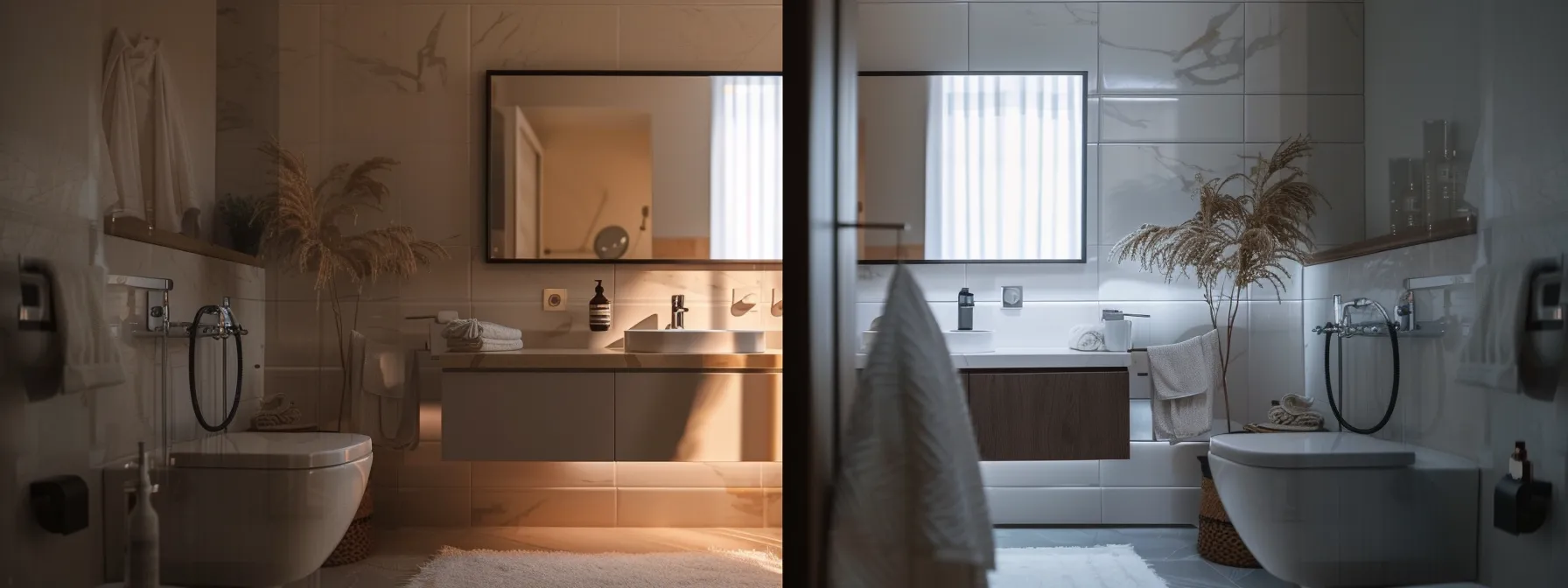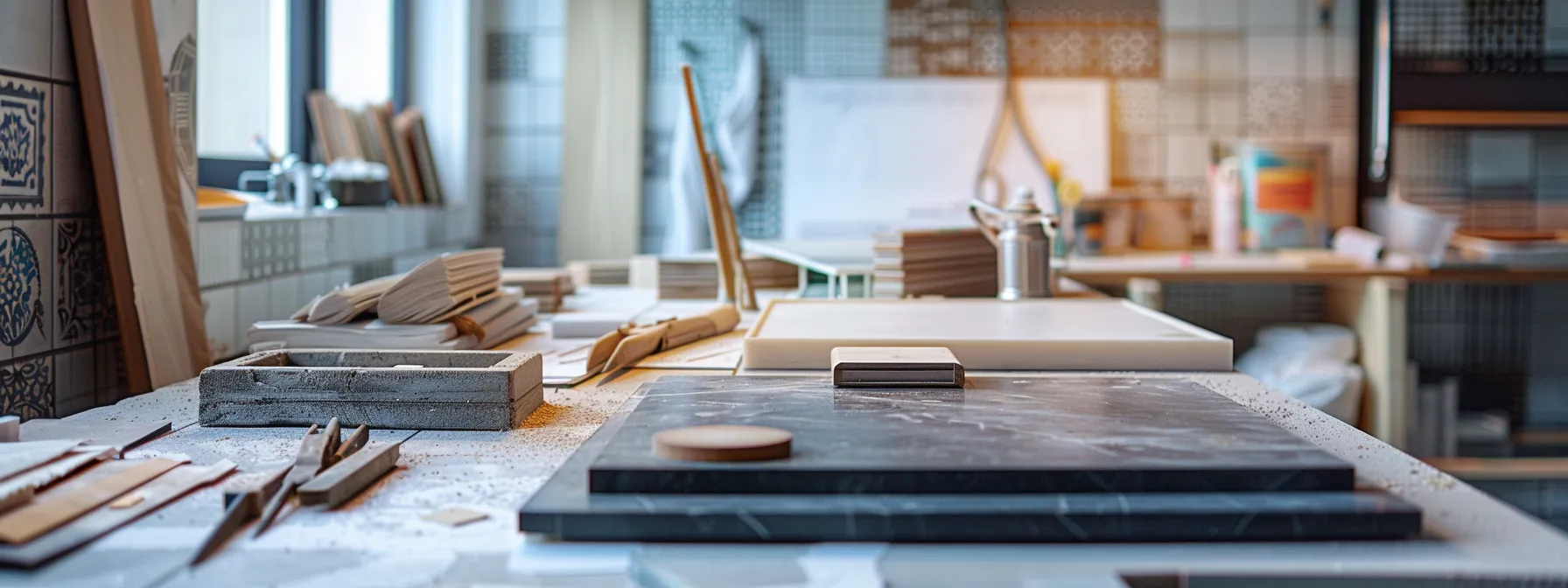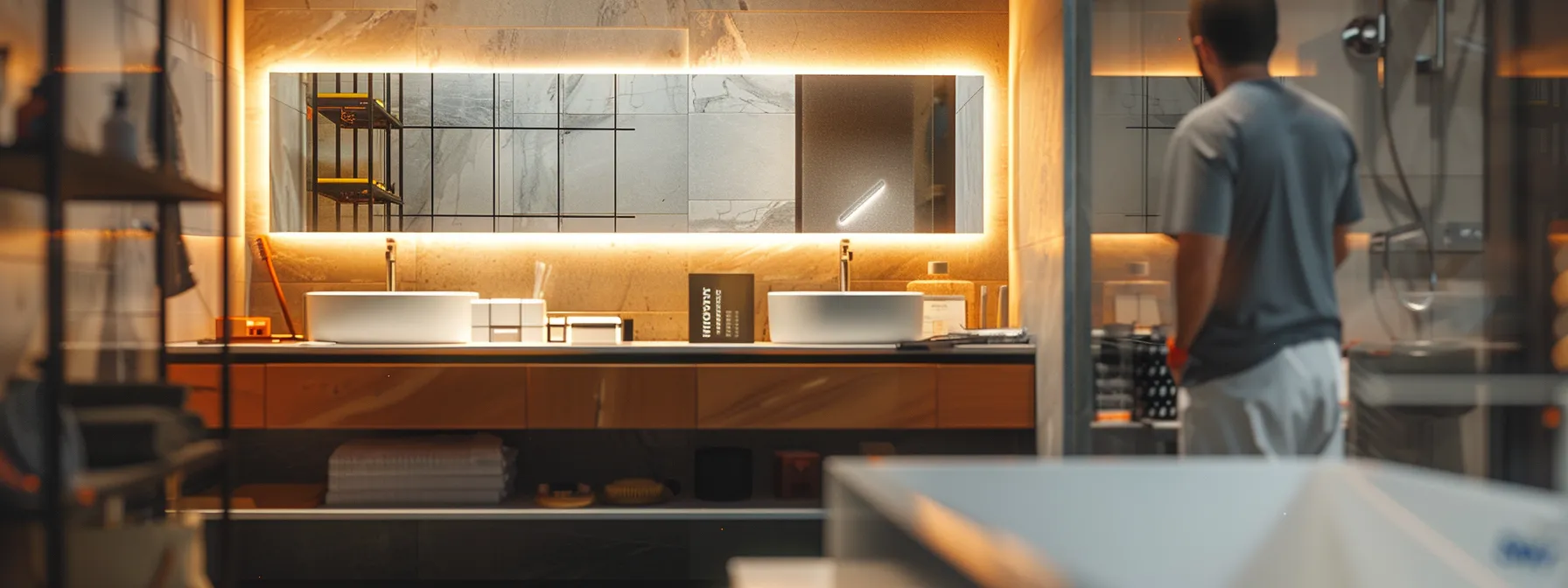

Are you planning a bathroom renovation but unsure about the costs involved? Understanding the average expense for bathroom renovations can help you avoid surprises. This blog post will break down typical expenses, give you tips for setting a realistic budget, and explore financing options. By reading this, homeowners will gain clarity on what to expect financially and how to make informed decisions for their projects. With the right knowledge, tackling bathroom renovation costs can become a smoother process, ultimately transforming your space without breaking the bank.

Several factors influence bathroom renovation expenses, including materials, labor, and design fees. Homeowners must also consider regional variations that can affect overall costs. This section will provide a cost breakdown to help understand how expenses are allocated, ensuring that every detail of the bathroom remodel project is addressed, from addressing mildew issues to selecting quality fixtures.
Bathroom renovation expenses are primarily influenced by the choice of materials, which can significantly impact the overall bathroom remodel cost. For instance, opting for high-end materials like granite for countertops or sinks can elevate the expense, while budget-friendly alternatives are available. Homeowners should work closely with a general contractor to assess these options, ensuring they select materials that fit both their aesthetic desires and financial plans.
Labor costs also play a crucial role in determining bathroom renovation expenses. Hiring skilled professionals can ensure quality work, particularly when it comes to intricate elements such as ceiling installations or plumbing adjustments. It is essential for homeowners to understand that the investment in reliable contractors contributes to the overall success and longevity of the remodel, ultimately enhancing the value of their home.
Regional variations play a significant role in bathroom renovation costs, as expenses can differ widely based on location. In urban areas, labor costs tend to be higher, particularly when skilled professionals are involved in installing features such as underfloor heating or new cabinetry. Homeowners need to account for these local pricing trends when planning their project budgets, ensuring they select solutions that align with regional market conditions.
The cost of materials, including specific items like cisterns and flooring, can also vary based on geographic regions. Areas with more robust home improvement markets may offer a wider range of options but often at elevated prices. Homeowners should carefully consider their floor plan and the overall scope of work required, as these factors will significantly influence the total cost of the renovation and determine the quality of the final result.
The cost breakdown of a bathroom renovation primarily includes materials, labor, and design fees, which can greatly influence the total expense. When addressing components like faucets, tiles, and a valve for the shower, choosing premium or budget-friendly options can make a significant difference in the overall budget. For example, a bathroom shower remodel cost may rise substantially if high-end materials are selected, emphasizing the importance of thoughtful material choices that align with both aesthetics and financial capacity.
Labor costs constitute a significant portion of the renovation budget, as skilled professionals, including electricians and plumbers, play a crucial role in achieving quality results. Homeowners should anticipate additional overhead expenses related to hiring these experts, particularly for complex installations or repairs. By understanding and planning for these costs, homeowners can ensure their renovation project proceeds smoothly, leading to a successful transformation of their bathroom space.

Common bathroom fixtures and features, such as showers and pipes, come with distinct pricing that can affect overall expenses. This section will provide insights into labor costs to remodel a bathroom, helping homeowners understand how professional services impact the budget. Additionally, it will explore how custom designs influence renovation costs, ensuring every detail aligns with both functionality and style.
When considering an average bathroom remodel, pricing for common fixtures such as faucets, lighting, and tiles can greatly influence the overall budget. For instance, the addition of mosaic tiles to a backsplash can enhance visual appeal but may come at a higher price. Homeowners should prioritize their preferences and functional needs, examining how the costs of these features fit into their renovation plans.
Lighting is another critical element that affects expenses in bathroom renovation projects. High-quality lighting fixtures can vary widely in price, and investing in energy-efficient options will lead to long-term savings. Homeowners should evaluate the average costs of different lighting styles to create an inviting atmosphere while ensuring their choices align with the broader design and budget of the bathroom remodel.
Labor costs significantly contribute to the overall new bathroom cost, especially during a full bathroom remodel. Employing professionals for plumbing, electrical work, and installation ensures the quality of the project, particularly in areas prone to water damage. For instance, hiring a qualified electrician to install adequate ventilation systems can prevent moisture buildup and enhance the longevity of fixtures, such as lighting and towel holders.
Understanding the scope of labor costs is essential for homeowners planning a renovation. Depending on the complexity of the design and the quality of materials selected, expenses may vary widely. By investing in skilled labor for crucial installations, such as flooring and fixtures, homeowners can ensure their bathroom not only meets their aesthetic preferences but also functions effectively for years to come. Common steps to consider include:
Custom designs play a crucial role in determining the overall bathroom renovation cost. Unique elements, such as a grab bar or tailored cabinetry, can significantly increase the budget due to their specialized nature and the potential for additional demolition or construction to accommodate them. Homeowners must assess how these features align with their vision and budget, weighing the benefits of enhanced functionality against the associated costs.
Moreover, custom designs can lead to higher expenses as they often require skilled labor for installation. For instance, a bathroom remodel that incorporates custom tile work or bespoke fixtures not only brings a personal touch but also demands meticulous craftsmanship. Homeowners should anticipate these costs and ensure that their design choices reflect both their aesthetic goals and financial boundaries, ultimately resulting in a renovated space that meets their needs and preferences:
Establishing a realistic budget framework is essential in determining the average cost of a full bathroom remodel. Homeowners should also allocate funds for unexpected expenses during a full bathroom renovation, addressing potential needs such as waterproofing. Additionally, budgeting for quality materials can significantly impact the overall bathroom reno cost and ensure a satisfactory bathroom remodel price. Each of these factors will be explored in detail to provide practical insights for effective financial planning.
Establishing a realistic budget framework for a bathroom renovation is crucial in determining the overall expenses involved in a bathroom upgrade. Homeowners should begin by researching the average bathroom renovation costs in their region, as this provides a baseline for expected spending. Utilizing resources like HomeAdvisor can offer valuable insights into typical bathroom remodel costs and help homeowners make informed decisions about allocating funds for materials and labor while considering any necessary accessibility features.
It’s essential for homeowners to anticipate potential surprises that may arise during the renovation process. Setting aside a portion of the budget for unexpected expenses ensures that additional needs, such as plumbing repairs or accessibility enhancements, can be accommodated without derailing the project. This proactive approach not only leads to a smoother renovation experience but also safeguards against overspending, allowing for a more satisfying result aligned with both aesthetic goals and financial capabilities.
When planning a bathroom remodeling project, homeowners must allocate a portion of their budget for unexpected expenses that may arise during the renovation process. Issues such as outdated plumbing or the need to replace a bathtub due to unseen damage can significantly increase the redo bathroom cost. By setting aside an additional 10% to 20% of the overall budget, homeowners can address these surprise costs without impacting their overall project timeline or quality.
Anticipating these unforeseen labor costs to remodel a bathroom underscores the importance of careful financial planning. Homeowners should consider consulting with professionals to evaluate potential areas that may require extra attention, such as energy-efficient upgrades or structural modifications. This proactive approach not only enhances the project’s overall success but also ensures that the bathroom transformation aligns with both aesthetic goals and practical needs, resulting in a more satisfactory outcome.
Budgeting for quality materials is essential when determining the average cost of bathroom renovation. High-quality countertops, light fixtures, and other durable elements can prevent future issues like mold and structural damage, ultimately providing long-lasting value. For example, investing in a sturdy heat lamp or moisture-resistant materials can help maintain the bathroom’s comfort and safety.
Using quality materials not only enhances the bathroom’s aesthetic appeal but also contributes to its overall functionality. Homeowners may find that a slightly higher initial investment in premium components pays off over time through reduced maintenance costs and fewer repairs. By prioritizing quality, they ensure a successful renovation that aligns with their vision and needs, resulting in a beautiful and functional space.
When considering the average bathroom remodel cost, homeowners have several financing options to explore. Personal loans can provide immediate funds for renovations, while home equity loans serve as a viable solution leveraging home value. Additionally, various grants and assistance programs can support renovation projects, potentially enhancing the return on investment and addressing essential upgrades to walls and floors.
For homeowners considering a bathroom renovation project, personal loans can be an effective funding option to cover costs associated with high-end materials like marble or ceramic tiles. These loans often provide quick access to cash, allowing for timely purchases that can elevate the complexity and aesthetic appeal of the renovation. With various lenders available, it’s essential for homeowners to compare interest rates and repayment terms to find a solution that best fits their financial situation.
Additionally, personal loans can help manage unexpected expenses that may arise from the renovation, such as structural adjustments to the roof or plumbing repairs. By securing financing early in the planning stages, homeowners can budget appropriately for both desired features and any necessary improvements, ultimately ensuring their bathroom remodel aligns with their vision and enhances their home’s value.
Home equity loans offer a practical financing solution for homeowners in New York City looking to manage the average cost to redo a bathroom. By leveraging the value of their existing home, homeowners can secure funds to cover the expenses associated with construction, making it easier to select quality materials and skilled labor for their renovation projects. This option not only provides immediate cash flow but also often comes with lower interest rates compared to other financing methods, creating a more affordable path to transforming their bathroom.
Utilizing a home equity loan can empower homeowners to invest in higher-end finishes and fixtures that elevate the overall design and functionality of their bathroom. For instance, with the right funding, they may opt for a brand of fixtures known for durability and style, further enhancing the appeal of their space. By understanding how home equity loans function, homeowners can make informed decisions that enable them to achieve their remodeling vision while effectively managing their budget.
Homeowners seeking to offset the expenses of bathroom renovations can explore various grants and assistance programs designed to support home improvement projects. These initiatives may be offered by local, state, or federal government agencies, focusing on specific needs such as energy efficiency upgrades or accessibility modifications. By researching available resources, homeowners can potentially reduce their financial burden and increase the overall value of their homes.
Applying for grants can require some effort, but the long-term benefits often outweigh the initial investment of time. Homeowners should gather necessary documentation and be prepared to outline their project goals, as funding priorities typically focus on enhancing safety, sustainability, and overall living conditions. Engaging with local authorities or community organizations can provide valuable guidance, ensuring homeowners maximize the benefits of available assistance programs:
Understanding the average cost of bathroom renovation requires a closer look at various project types. Small bathroom renovations can present budget-friendly options with manageable costs, while full bathroom remodels typically involve more significant investments. Luxury bathroom renovations, on the other hand, demand higher spending for premium features. Each segment offers distinct financial considerations essential for homeowners planning their upgrade.
Small bathroom renovations can be an excellent way for homeowners to enhance their space while managing costs effectively. Generally, these projects involve straightforward improvements, such as updating fixtures, replacing tiles, or installing new lighting, which can significantly refresh the room’s appearance without requiring a complete overhaul. Budgeting for a small bathroom remodel typically ranges from $5,000 to $15,000, depending on the materials chosen and the complexity of the changes involved.
When planning a small bathroom renovation, it is crucial for homeowners to focus on high-impact updates that elevate both style and functionality. Simple upgrades, like installing a modern vanity or optimizing storage solutions, can create a more organized and inviting environment. By collaborating with experienced contractors, homeowners can ensure every detail of the renovation aligns with their vision, leading to a beautiful and practical bathroom space that maximizes the room’s potential.
Full bathroom remodels typically involve a significant financial commitment, often ranging between $15,000 and $50,000. The costs largely depend on the scope of the project, the quality of materials selected, and any special features desired, such as custom cabinetry or high-end fixtures. Homeowners should prepare for various expenses associated with labor, materials, and design fees, as these elements collectively shape the overall financial landscape of the renovation.
Investing in a full bathroom remodel often pays off in the long term, as many homeowners see a substantial increase in home value and personal satisfaction. Opting for durable materials and quality workmanship can greatly enhance the functionality and aesthetic of the space, while also minimizing future maintenance needs. By planning carefully and working with experienced contractors, homeowners can create a beautiful and practical bathroom that meets their needs and complements their lifestyle.
Luxury bathroom renovations often require a significant investment, with costs ranging from $50,000 to upwards of $100,000. Homeowners pursuing high-end features such as a soaking tub, custom cabinetry, or spa-like showers can expect expenses to increase. Selecting quality materials, like marble or high-performance fixtures, can enhance both the aesthetic appeal and long-term durability of the space.
To maximize the investment in a luxury bathroom remodel, homeowners should focus on functionality alongside beauty. Incorporating innovative technologies like smart showers or heated flooring not only elevates comfort but also adds modern convenience. Partnering with experienced designers and contractors ensures that the features chosen meet personal preferences while also aligning with overall project goals, resulting in an upscale retreat that enhances everyday living.
This section addresses key questions regarding bathroom renovation costs, including the average cost range for a bathroom remodel and ways to minimize expenses. It also presents money-saving tips for those considering DIY renovations. Each topic offers practical insights that can help homeowners make informed financial decisions while achieving their desired bathroom transformation.
The average cost range for a bathroom renovation varies significantly based on several factors, including the size of the bathroom, the materials selected, and the extent of the remodel. Typically, homeowners can expect to spend between $5,000 and $50,000 for a comprehensive renovation, with smaller projects costing less and full remodels requiring a higher investment. Based on recent trends, a mid-range remodel often falls within the $15,000 to $25,000 range, allowing for quality materials and professional labor.
Understanding the financial implications of a bathroom renovation allows homeowners to make informed decisions about their projects. For instance, choosing budget-friendly fixtures and focusing on essential improvements can help keep costs down. By planning carefully and setting a clear budget, individuals can effectively allocate funds to meet their desired outcomes without compromising quality:
To minimize costs during a bathroom renovation, homeowners should prioritize essential upgrades and focus on high-impact changes. This approach allows them to achieve a fresh look without overextending their budget on unnecessary features. For instance, opting for affordable yet stylish fixtures or refinishing existing cabinetry can significantly reduce expenses while still enhancing the space’s appeal.
Planning and thorough research also play a vital role in cost containment. Homeowners can save by comparing prices from various suppliers and considering purchasing materials during sales. Keeping the existing layout can further cut costs by eliminating the need for extensive plumbing changes. Following these practical strategies will help ensure a successful renovation within budget constraints:
Homeowners considering DIY renovations for their bathrooms can significantly reduce expenses by tackling smaller projects themselves. Simple tasks like painting walls, installing new fixtures, or updating hardware can offer a fresh look without the need for professional labor. It is essential for them to assess their skills accurately, ensuring they take on manageable tasks that will effectively enhance the overall aesthetic of the space. This approach allows for savings while also giving homeowners a sense of ownership in the remodeling process.
Furthermore, sourcing materials at local home improvement stores or online marketplaces can lead to substantial savings. Homeowners can use promotional sales and discounts to find quality components at a lower price. By taking the time to compare options and prioritize cost-effective choices, they can achieve a stylish bathroom upgrade that aligns with their budget while still meeting their design goals. Engaging in DIY renovations not only cuts costs but also enables homeowners to personalize their spaces effectively.
Understanding the average expenses associated with bathroom renovations is crucial for homeowners planning any remodeling project. Analyzing factors such as materials, labor, and regional pricing ensures informed financial decisions, helping to align design choices with budgetary constraints. By allocating funds wisely and anticipating unexpected costs, homeowners can achieve their desired outcomes while enhancing their home’s value. This knowledge empowers individuals to create functional, aesthetically pleasing spaces that meet their needs and preferences effectively.
